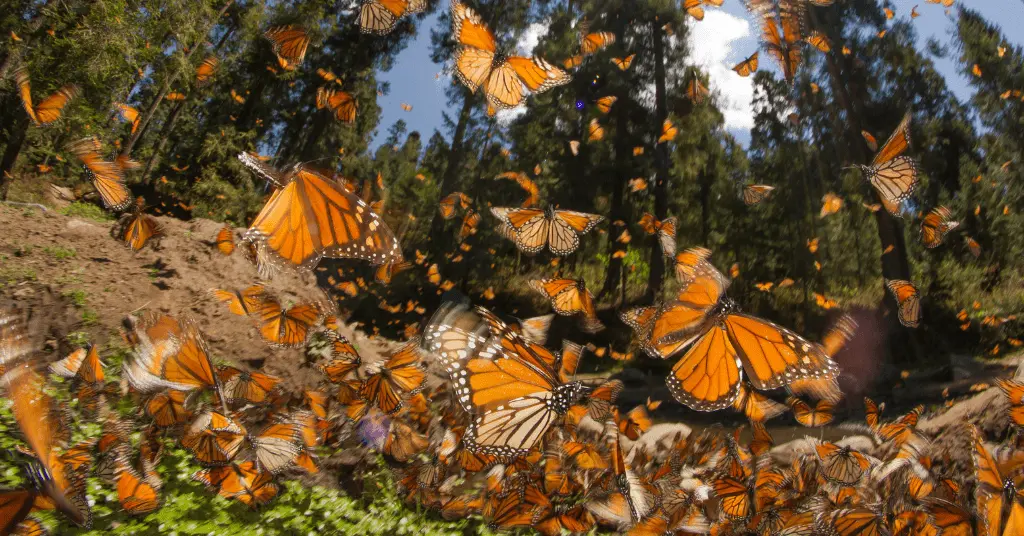AI Answer Evaluation Platform Live Now. Try Free Answer Evaluation Now
Adaptive Radiation
Adaptive radiation is a biological phenomenon in which a single ancestral species rapidly diversifies into multiple new species, each adapted to a specific ecological niche or habitat. This process occurs when a population of organisms is exposed to a range of new and diverse environments, leading to the evolution of specialized traits that allow different subgroups of the population to exploit these environments more efficiently.

The process of adaptive radiation typically begins when a group of organisms colonizes a new and previously unoccupied habitat. The absence of competition and existing predators in this new environment creates a “vacuum” that allows the organisms to evolve and adapt in unique ways, leading to new species that are specialized to particular niches or ecological roles.
Over time, the different subgroups of the population evolve to occupy different niches or habitats, each with unique adaptations. These adaptations may include changes in morphology, physiology, behavior, or other traits that allow the organisms to exploit specific resources or environmental conditions. As a result, the original population may diverge into multiple new species adapted to different environmental aspects.
Examples of adaptive radiation can be seen in many different groups of organisms, including finches in the Galapagos Islands, cichlid fish in African lakes, and marsupials in Australia. These examples demonstrate how the process of adaptive radiation can lead to the development of a diverse array of species, each with its own set of specialized adaptations that allow it to thrive in its specific environment. (The Phenomenon of Evolutionary Radiation, 2015) [1]
Dimension of Adaptive Radiation
The dimension of adaptive radiation refers to the various aspects or components that make up the process of adaptive radiation. These dimensions include:
Ecological opportunity: Adaptive radiation requires a new or previously unoccupied ecological niche or habitat that provides opportunities for the ancestral population to evolve and diversify.
Genetic variation: The ancestral population must possess genetic variation that allows for the emergence of new traits and adaptations.
Selective pressures: Different subgroups of the ancestral population must be exposed to different selective pressures that favor the evolution of different adaptations.
Reproductive isolation: The emergence of new species through adaptive radiation often involves the development of reproductive barriers that prevent interbreeding between subgroups of the ancestral population.
Divergence and speciation: Adaptive radiation leads to the emergence of multiple new species, each adapted to a specific ecological niche or habitat.
Understanding these dimensions of adaptive radiation can help us to better understand the process by which new species emerge and diversify, and can provide insight into the factors that contribute to the evolution of biological diversity. [5]
Pros and Cons of Adaptive Radiation
Adaptive radiation can have both advantages and disadvantages, depending on the context in which it occurs. Here are a few potential pros and cons of adaptive radiation:
Pros:
Increased biological diversity: Adaptive radiation can lead to the emergence of a diverse array of species, each adapted to a specific ecological niche or habitat. This can increase overall biological diversity and contribute to ecosystem stability.
Rapid evolution: Adaptive radiation can allow for rapid evolution and speciation, as different subgroups of the ancestral population evolve specialized adaptations to exploit different ecological opportunities.
Colonization of new habitats: Adaptive radiation can enable populations to successfully colonize and exploit new habitats, even in the face of competition from existing species.
Cons:
Genetic bottlenecking: The initial colonization of a new habitat can involve a small founder population, which can lead to genetic bottlenecking and reduced genetic diversity.
Inbreeding and genetic drift: Small populations may be more susceptible to inbreeding and genetic drift, which can reduce genetic diversity and increase the likelihood of deleterious mutations.
Limited gene flow: As new species emerge through adaptive radiation, gene flow between them may be limited or absent, which can reduce the potential for genetic exchange and the emergence of novel traits.
The pros and cons of adaptive radiation depend on the specific circumstances in which it occurs, the balance between the benefits of rapid evolution and diversification, and the costs of reduced genetic diversity and limited gene flow.
Adaptive Radiation and Environment
Adaptive radiation is strongly influenced by the environment in which it occurs. The emergence of new ecological opportunities and selective pressures can lead to the evolution of new traits and adaptations that enable populations to exploit these opportunities more efficiently. Here are a few ways in which the environment can shape adaptive radiation:
Ecological opportunity: Adaptive radiation requires the presence of new or previously unoccupied ecological niches or habitats that provide opportunities for populations to diversify. These opportunities may arise due to changes in environmental conditions such as climate, the availability of resources, or the absence of competition or predators.
Selective pressures: The environment can exert selective pressures on different subgroups of the ancestral population, favoring the evolution of different traits and adaptations. For example, in the case of finches on the Galapagos Islands, different beak shapes evolved in response to different food sources and environmental conditions.
Competition and predation: Competition for resources and predation can also influence adaptive radiation. In some cases, the absence of competition or predators in a new environment can allow populations to diversify rapidly, while in other cases, the presence of competition or predation can lead to the evolution of specialized traits that allow populations to avoid or exploit these threats.
Geographic isolation: The physical environment can also contribute to adaptive radiation by creating geographic barriers that isolate populations and limit gene flow between them. This can promote divergence and the emergence of new species.(Losos, 2010) [4]
The environment plays a crucial role in shaping the process of adaptive radiation by creating new ecological opportunities and selective pressures that drive the evolution of new traits and adaptations.
Darwin’s finches
Darwin’s finches are a group of bird species found on the Galapagos Islands that played a key role in the development of Charles Darwin’s theory of evolution by natural selection. The finches are famous for their variation in beak size and shape, which reflect adaptations to different food sources and environmental conditions.

Darwin first encountered the finches during his voyage on the HMS Beagle in the 1830s. He collected specimens of the birds and noted their variation in beak morphology, but did not initially recognize their significance for understanding the process of evolution.
It was not until later, after returning to England and reflecting on his observations, that Darwin realized the importance of the finches for understanding the mechanisms of evolutionary change. He recognized that the finches had evolved through a process of adaptive radiation, whereby different subgroups of a common ancestor had evolved specialized adaptations to exploit different ecological niches on the Galapagos Islands.
The finches vary in their beak size and shape depending on the food they consume. For example, the ground finches have larger, stronger beaks that are adapted for cracking seeds, while the tree finches have smaller, more pointed beaks that are adapted for probing into flowers for nectar or insects.
Darwin’s finches have since become an iconic example of the process of adaptive radiation and the role of natural selection in driving evolutionary change. They have also been the subject of extensive research, with studies on their genetics, behavior, and ecology shedding new light on the mechanisms of evolutionary change.
In summary, Darwin’s finches played a crucial role in the development of evolutionary theory and continue to be a source of fascination for scientists and the public alike. Their variation in beak morphology reflects the process of adaptive radiation, and their study has provided important insights into the mechanisms of evolutionary change.
Adaptive Radiation in Hawaii
Adaptive radiation is a process that occurs frequently in isolated island ecosystems, where new ecological niches become available for colonization. Hawaii is one such location where adaptive radiation has been observed to have a profound impact on the diversity of its native flora and fauna.(Reding et al., 2008) [2]
Hawaii’s unique geological history and isolation from the mainland have resulted in a highly diverse range of habitats and ecological niches. These niches include a wide range of elevations, soil types, and precipitation levels, which have allowed for the evolution of diverse plant and animal species.
One example of adaptive radiation in Hawaii is the silversword alliance, a group of 28 species of plants that are all closely related and share a common ancestor. These plants are found at high elevations in the islands’ volcanic peaks and have evolved specialized adaptations to the harsh, high-altitude environment, including the ability to collect and store water in their leaves.
Another example is the Hawaiian honeycreepers, a group of bird species that are endemic to Hawaii and have undergone extensive adaptive radiation. The honeycreepers exhibit a wide range of bill shapes and sizes, reflecting adaptations to different food sources such as nectar, fruit, and insects. The beak of the akiapōlāau, for example, is a unique adaptation that allows it to extract insects from the bark of trees by using its upper beak to hammer and its lower beak to pry.
Hawaii’s native flora and fauna have also undergone extensive adaptive radiation in response to the presence of invasive species, which have posed a significant threat to the islands’ unique biodiversity. For example, the loss of native birds due to habitat destruction and the introduction of invasive predators has led to a decline in the populations of native plant species that rely on bird pollination and seed dispersal.
Overall, adaptive radiation has played a significant role in shaping the diversity of Hawaii’s native flora and fauna. However, the ongoing threat of invasive species and habitat destruction highlights the need for conservation efforts to preserve the unique biodiversity of these islands.
List of Adaptive Radiation Species
There are many examples of species that have undergone adaptive radiation throughout evolutionary history. Here are some notable examples:
- Darwin’s finches – a group of bird species found on the Galapagos Islands that played a key role in the development of Charles Darwin’s theory of evolution by natural selection.
- Hawaiian honeycreepers – a group of bird species endemic to Hawaii that have evolved a wide range of bill shapes and sizes to exploit different food sources. [3]
- East African cichlids – a group of fish species found in the African Great Lakes that have undergone extensive adaptive radiation and exhibit a diverse range of feeding behaviors, coloration, and body shapes.
- Anolis lizards – a group of lizards found throughout the Caribbean that have evolved a wide range of adaptations for climbing, including toe pads and long limbs.
- Australian marsupials – a diverse group of mammal species found in Australia that have evolved a range of adaptations for different ecological niches, such as the kangaroo’s powerful hind legs for hopping and the koala’s specialized diet of eucalyptus leaves.
- Silversword alliance – a group of 28 plant species found at high elevations in Hawaii’s volcanic peaks that have evolved specialized adaptations to the harsh, high-altitude environment, including the ability to collect and store water in their leaves.
- African rift lake cichlids – a group of fish species found in the African Rift Valley lakes that have evolved a wide range of adaptations for feeding, including specialized jaws and teeth for different food sources.
These are just a few examples of the many species that have undergone adaptive radiation throughout evolutionary history, highlighting the importance of ecological opportunities in shaping the diversity of life on Earth.
In conclusion, adaptive radiation is a process that plays a crucial role in shaping the diversity of life on Earth. It occurs when a single ancestral species rapidly diversifies into multiple descendant species, each occupying a unique ecological niche. This process can occur in a variety of environments, but it is often observed in isolated island ecosystems where new ecological niches become available for colonization.
Adaptive radiation can lead to the development of diverse morphological and behavioral adaptations, such as changes in body size, shape, and function, and can have profound impacts on the evolution of entire ecosystems. However, it is important to note that adaptive radiation is not always a positive process, as it can also lead to the extinction of some species that fail to adapt to new ecological niches.
Overall, the study of adaptive radiation is essential to our understanding of the diversity of life on Earth and the evolutionary processes that shape it. Further research in this area can provide insights into the mechanisms driving the emergence and persistence of new species and the factors that influence their success or failure.
People also ask
Reference
- The Phenomenon of Evolutionary Radiation. (2015, May 15). The Phenomenon of Evolutionary Radiation – ScienceDirect. https://doi.org/10.1016/B978-1-78548-029-4.50003-6
- Givnish, T. J., Millam, K. C., Mast, A. R., Paterson, T. B., Theim, T. J., Hipp, A. L., Henss, J. M., Smith, J. F., Wood, K. R., & Sytsma, K. J. (2008, October 14). Origin, adaptive radiation, and diversification of the Hawaiian lobeliads (Asterales: Campanulaceae). PubMed Central (PMC). https://doi.org/10.1098/rspb.2008.1204
- Reding, D. M., Foster, J. T., James, H. F., Pratt, H. D., & Fleischer, R. C. (2008, December 16). Convergent evolution of ‘creepers’ in the Hawaiian honeycreeper radiation. PubMed Central (PMC). https://doi.org/10.1098/rsbl.2008.0589
- Losos, J. (2010, January 1). Adaptive Radiation, Ecological Opportunity, and Evolutionary Determinism. Adaptive Radiation, Ecological Opportunity, and Evolutionary Determinism. https://dash.harvard.edu/handle/1/9464287
- Gavrilets, S., & Vose, A. (2005, December 5). Dynamic patterns of adaptive radiation. PubMed Central (PMC). https://doi.org/10.1073/pnas.0506330102



